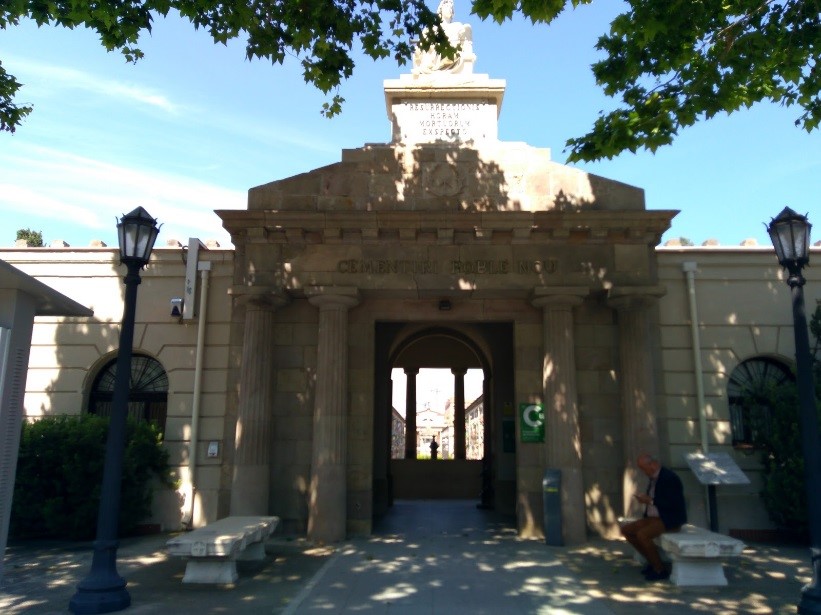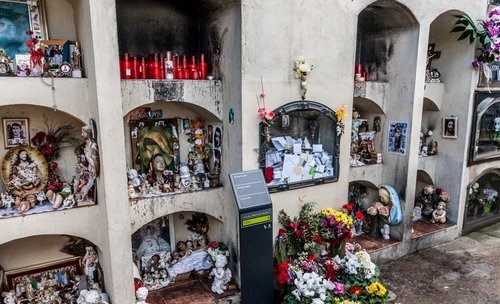The gloomy side of Barcelona
The cemeteries of Barcelona open their gates to offer free tours to visitors

Barcelona offers a large number of tourist and cultural activities – but one doesn’t often think of cemeteries. Yet, these are alternatives to discover the artistic and historic values of the Catalan capital. They are open for visits and are budget-friendly –one can enter for free any of the main four cemeteries: the ones in Poblenou, Les Corts, Montjuïc and Sarrià.
Poblenou cemetery
The graveyard in Poblenou can be visited by tourists at their leisure. There are famous graves and distinguished mausoleums from the 19th century, and the facilities offer personal guides to show them to visitors. There is also a mobile app that lets those interested follow their own route, showing each important stop not to miss.
Over the span of an hour and a half, one can see the 30 attractions in the cemetery, bringing people closer to traditional Catalan architecture and the emblematic characters and families of Barcelona.
Front door
The first stop at the Poblenou Cemetery is the entrance. Here is its story: in 1818, a young Italian architect called Antonio Ginesi drew up the layout of the cemetery. “He was an enlightened man with a neoclassical training, and he conceived the cemetery as a homogenous, simple space, free of pointed class differences”, explained tour guide Nick Lloyd.
But before the project was finished, and at a young age, Ginesi died. The management of the project was taken over by other professionals, such as Miquel Garcia Roca, the very same behind the El Liceu opera house. “Since his successors wanted to highlight the importance of the bourgeoisie with the construction of noble mausoleums, the cemetery evolved in a different direction”.
The obelisks at the front door are also worth a closer look. Created by Francesc Pagès Serratosa, one holds a cross. This is ‘Fides,’ faith. The other, standing beside an anchor is ‘Spes,’ hope. Also upon entering the cemetery one discovers “the portico,” a large horizontal structure, and an epitome of Neoclassical architecture.

The first monument in the graveyard bears a grim reminder in its name: ‘The Monument to the Dead from Yellow Fever.’ This homage was built in memory of doctors, clergymen and public servants who lost their lives to the epidemic of 1821, while on duty.
This was a devastating moment for the city. Indeed, “the epidemic with the highest mortality rate was yellow fever,” explained Lloyd. And it wasn’t the only one. “The city of Barcelona suffered many epidemic diseases during the nineteenth century, due to the increase of population and the worsening of hygienic conditions,” he detailed.
The mystery around ‘The Santet’
One of the most popular tombs? ‘El Santet,’ the tomb of Francesc Canals Ambrós. But his popularity is a mystery in itself. “We do not know why nor how he became a cult figure after death. But the truth is that the popular worship of ‘the little Saint’ began immediately after his death, and continues to the present day,” explained Lloyd. The veneration is visible: devotees have built an improvised altar, bringing notes, pictures, candles and roses.
Then, comes the chapel. In the center lies coiled an ‘ouroboros,’ the mythical serpent swallowing its own tail: a universal symbol of eternity. Superimposed on the architrave we read an inscription in Latin: “Dedicated to the tranquility and comfort of the deceased.”
The most iconic mausoleums
The tomb of the Nadal family is a sculpture made in marble in 1868. The sculptor wanted to “portray the faintness of the dying body without any idealization,” said the tour guide. It’s also a tender homage from daughters to their deceased mother.
This differs greatly, then, from the mausoleum in memory of the businessman Juan Vias Paloma. “The angels on the sides represent industry, navigation, trade and time,” revealed Lloyd. The dome was designed in a neogothic style. And it’s peculiar in that it’s not a monument to the dead: instead, it’s an exaltation of the person lost, and a reflection of his high social level in life.